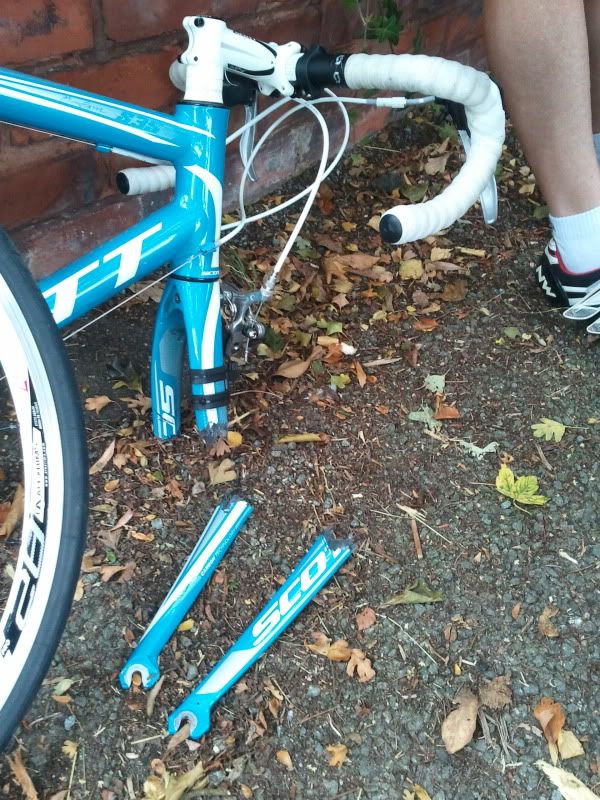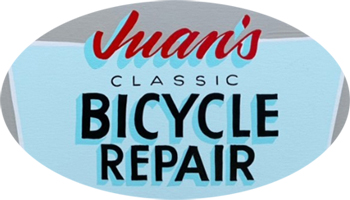I am now officially part of Stevie's Happy Bikes crew in Corralles, New Mexico and will be helping out with mechanic/sales work a few days out of the week when it starts to warm up here. I never seriously considered working for a bike shop until recently when I became more acquainted with Stevie and his way of work. The shop that he runs outside of Albuquerque is my cup of tea being that second hand bikes and consignments are emphasized far more than pushing new bike sale quotas and super high end componentry. The yard is littered with vintage road, mountain and cruiser bikes spanning many decades evoking the sense of orphan children looking for TLC and good homes. Though they do sell new bicycles and components, the central focal point is on practical bicycles that will regularly be ridden as opposed to 4-5 $ digit race machines. The fit seems great for me and will certainly be a positive environment for me to spread my wings, giving attention to the blue collar side of the spectrum and helping promote cycling for all, not just the affluent.
Monday, January 25, 2016
Friday, January 15, 2016
How many bikes are enough?
With the ability to choose from road: commuter, adventure, gravel, touring, cyclocross, cross country, enduro and downhill bicycles, the options seem myriad and leave the doors open to one of the more obvious questions facing cyclists; how many bikes are enough? To begin answering this question would be to first really break down the various styles of bikes offered today. From featherweight, aerodynamic road bikes to 5"+ travel suspended mountain bikes, we must figure out what we are trying to achieve, how often we are trying to achieve it and determine what constitutes a reasonable amount of money to spend in the process. A logical follow up question would be to ask how many bicycles can fill multiple roles at one time without sacrificing to much in one realm or another. The balance of compromise seems to be all to prevalent in the world of cycling; particularly pertaining to the rider seeking "jack of all trades" style bikes.
Speed and light weight vs comfort and durability
Two of the biggest aspects obsessed over in cycling are light weight products coupled with ultimate speed. The desire to go faster for longer periods of time is a goal that most cyclists strive to achieve at one point or another and often overshadows the cost/benefit ratio of such an equation. To get something for nothing is simply never the case as light weight frames and componentry will always come at an inversely proportional cost of strength and durability. A thoroughbred road race machine for example will exhibit characteristics that lend itself to lightning fast hill climbs and wind tunnel test worthy times on the tarmac but will lack when the going gets rough and terrain becomes somewhat bumpy and uneven. Someone once said that "to overspecialize is to breed in weakness" and could easily have been speaking particularly about the bicycle when making this assertion. It is to the degree that one aspect becomes more and more the focal point of purpose that other aspects become further from grasp. If your goal is to have the fastest road bicycle possible you will find that it is best to operate such a machine within the particular parameters it was designed around. Pushing to far into the opposite end of the operational spectrum will deliver a sometimes painful and expensive message.
 |
| Gauge your riding style well and try not to be like this person... |
When it comes to bridging the gap between bicycle genres you indeed make trade offs. A more sturdy aluminium or steel frame will cost you extra weight and thus be slower but will begin to pay dividends when it comes to longevity and overall comfort. The aggressive geometry of a race steed will pay a toll on you physiologically as a hunched over, aerodynamic position taxes the body if held for long periods of time on a regular basis. Conversely, too relaxed of geometry will not lend itself well to consistent lengths of power output and will in turn also be sluggish in the corners. Figuring out what importance one facet or the other plays in your cycling experience will be completely personal and should be ultimately determined by your intentions. An important question to ask at this point is whether or not you are really a full-tilt professional looking for marginal weight savings and aerodynamics geared toward every particular genre of riding or someone who wants to get the most out of their bicycle purchases.
Dynamic and enduring
These two words above best epitomize a well spent dollar for non-millionaire individuals lacking bottomless pockets of cash. To acquire something that does a few, or possibly many jobs well and is simultaneously enduring constitutes true efficacy. If you are the type of cyclist that likes to go beyond a purely road or mountain oriented ride in a more recreational inclined fashion, the words in the header above will in time present themselves to be just as necessary as desirable. By bridging the gap between some of the never ending bicycle genres you can do some serious downsizing to your current and/or hypothetical bicycle stable while conversely upgrading your wallet in the process. The question once again arises; what do you want to do with your bicycle(s)? Perhaps you like road riding but also enjoy good stints of back road gravel trekking. Or maybe you are into fast paced boulder ridden trail riding and at the same time enjoy less gnarly fire road rides. Do the previously mentioned riders really need two not so different yet equally expensive bikes to fill the void of two similarly related objectives?
 |
| The late Jobst Brandt (highly revered bicycle critic, mechanical engineer, author and avid cyclist) making easy work of some dirt trails on his "road" bike. |
Fewer bikes, less profitibility
For the sake of length (i tend to carry on) subtle bicycle differences will be ignored in this particular post to try and stay on topic. The main concern attempting to be expressed is an overabundance of bicycle consumption geared toward a market of riders that lack the time or necessity to justify such niche orientated, overlapping bicycle purchases. Cutting through the industry fluff in today's world is just as important as understanding the subtle intricacies that compose bicycle similarities and differences. There is certainly more in common with a cross country and enduro bicycle than fill in the blank manufactures will lead you to believe, and for a very good reason at that. The bicycle marketing think tanks that be will lead you to believe that you need one particular bicycle, for every possible riding scenario. It is simply not lucrative for the mega bicycle conglomerates that dominate the market to sit back and watch as masses of riders downsize their purchasing habits with less frequency. In order to prop up the bicycle industry such manufactures feed on current trends that exhibit even the slightest bit of traction. If a slightly new wheel size for example (think 29'er in the mid 00's and 650b circa 2012) proves itself in the world racing circuit battle ground, you better believe that every effort will be made to lead you into believing that your previous setup is now obsolete. The objective of never ending bicycle sales coupled with race oriented, weight and speed obsessed cyclists will continue to pave the way for more and more styles of bicycles to fill more and more supposedly niche riding. It is up to us a cyclists to cast a voice using our most valuable tool being our dollar. Our purchasing power tells such companies and industry annalists that we are indeed intelligent and discerning cyclists. If we continue to feed into the previously mentioned propaganda we will certainly perpetuate the train of planned obsolescence that has already gained such momentum. Perhaps the next time you watch Alberto Contador (6 time grand tour winning road cyclist) climb the Pyrenees, or Julien Absalon (6 time world cup winning mountain biker) descend rock gardens in Windham, ask yourself if its really the $9,000, brand new super light bicycle in between their legs that enables them to do what it is they do with such grace, or perhaps more so their fitness, skill and accurate bicycle fitment.
Subscribe to:
Posts (Atom)


